How to Sew a Swimsuit with a Skirted Bottom
Adding a skirt to the bottom of your swimsuit is a great way to give it a bit of personality while also adding a bit of coverage. You can customize the length from cheeky to modest and you can customize the fullness from girly to sporty. You can also easily add a skirt to a bikini bottom or splice it in to a full length suit. So many options!
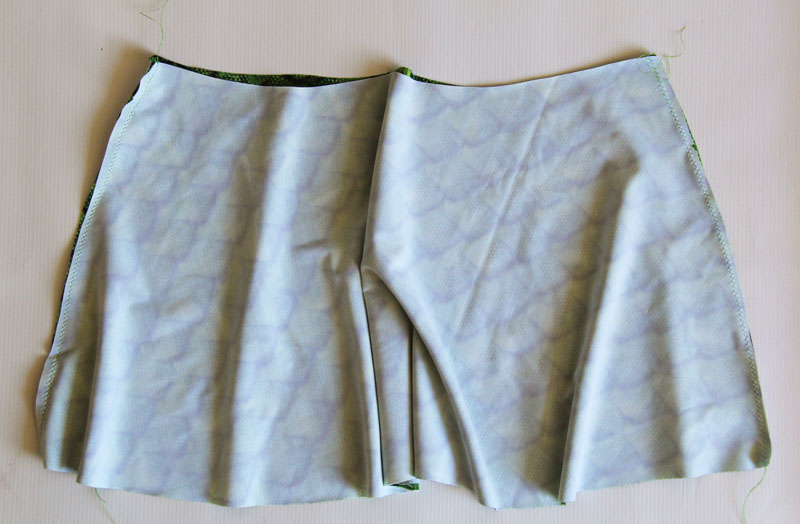
A circle skirt is a great option for the skirted portion of your swimsuit. A half-circle skirt will give you a sporty look (like this sample skirt) and a full circle skirt will give you a more ruffled look. Remember that there is a lot of negative ease in a swimsuit so the skirt fits you more snugly through the top several inches than it would if you were sewing a typical circle skirt. Remember also that the longer your skirt is the more volume it has at the bottom in a circle skirt, so if you are sewing a longer skirt than this example you don’t necessarily need to sew a full circle skirt to get more volume. In fact, I wouldn’t sew a full circle on a swimsuit skirt much longer than this as the amount of fabric you have will become a bit much when you’re actually in the water.
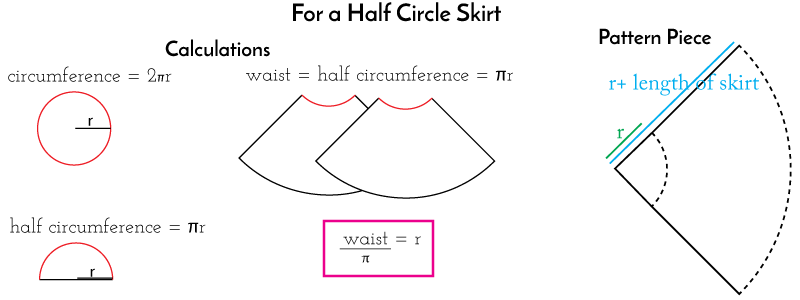
Cut a half circle skirt so that the radius of the half circle is the width of the top of your swimsuit pieces (before you have sewn them so that you are including the width of the seam allowances). To do this, draw a quarter of a circle with the inner radius (your waist)/pi. The outer radius will be the length of the skirt + the inner radius. (For reference, this skirt is 11” long in back.) Sew the side seams of the skirt pieces.
If you’re curious about how we got the numbers above, remember that the circumference of a circle is 2*pi*r. If we divide both sides of the equation by 2, we have half of the circumference of a circle is pi*r. We want the waist to equal the half circumference (since we are making a half circle skirt) so waist = pi*r. We divide both sides by pi to get r = your waist/pi.
(For those of you that have done your best to forget the geometry you learned in school, π = pi = 3.14 ish).
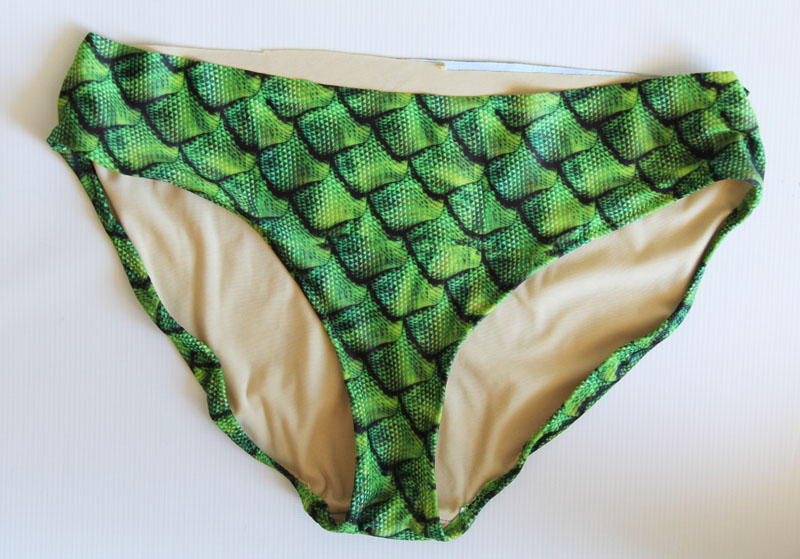
Sew the bottom of your swimsuit as you normally would without finishing the top of the suit.
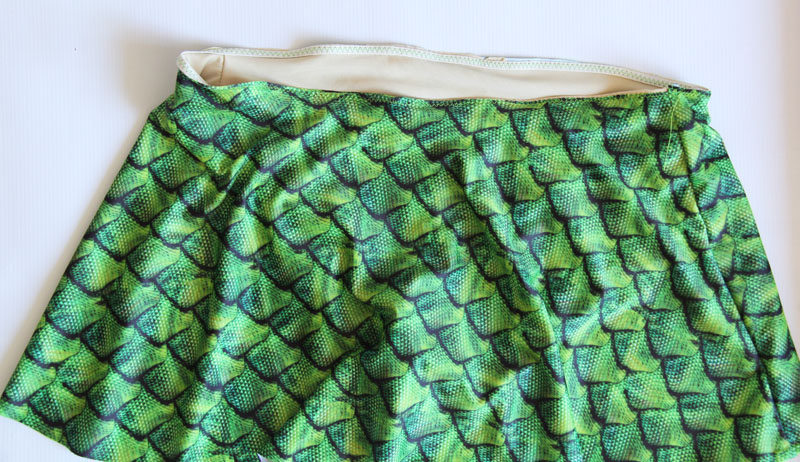
Slip the bottoms into the skirt so that the right side of the suit is against the wrong side of the skirt. Sew elastic to the inside top of the skirt, keeping tension on the elastic as you sew.
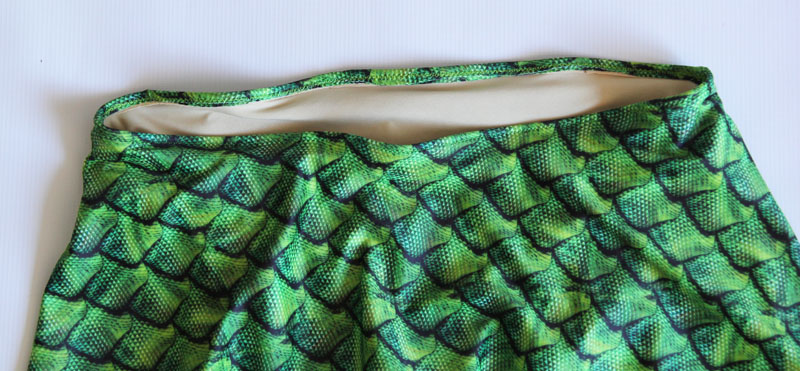
Fold the elastic to the inside and topstitch it down to finish.
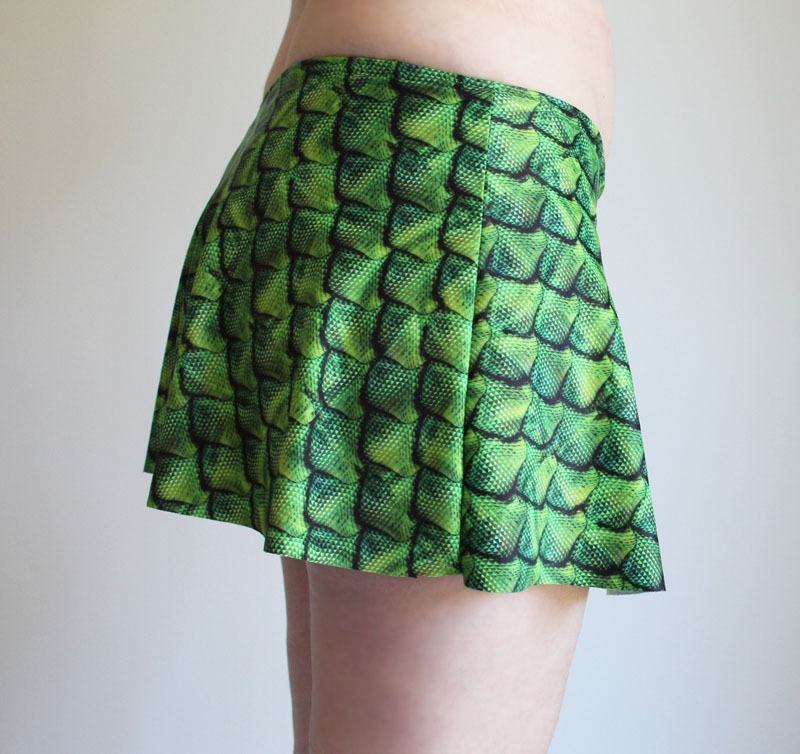
When you put on your skirt you may find that your hem is uneven. My hem dips down in the front for two reasons – the front of this bikini dips down and my tuchus takes up volume in the back.
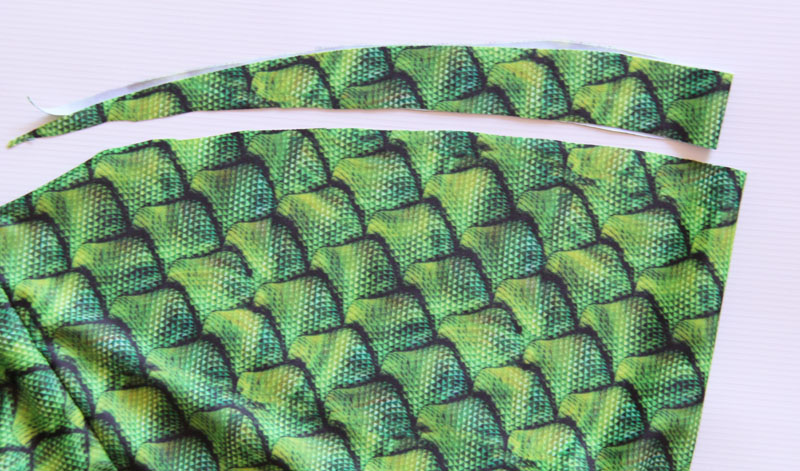
To even out any major discrepancies in hem length between front and back, remove a moon of fabric tapering from the full length in the front to nothing at the sides.
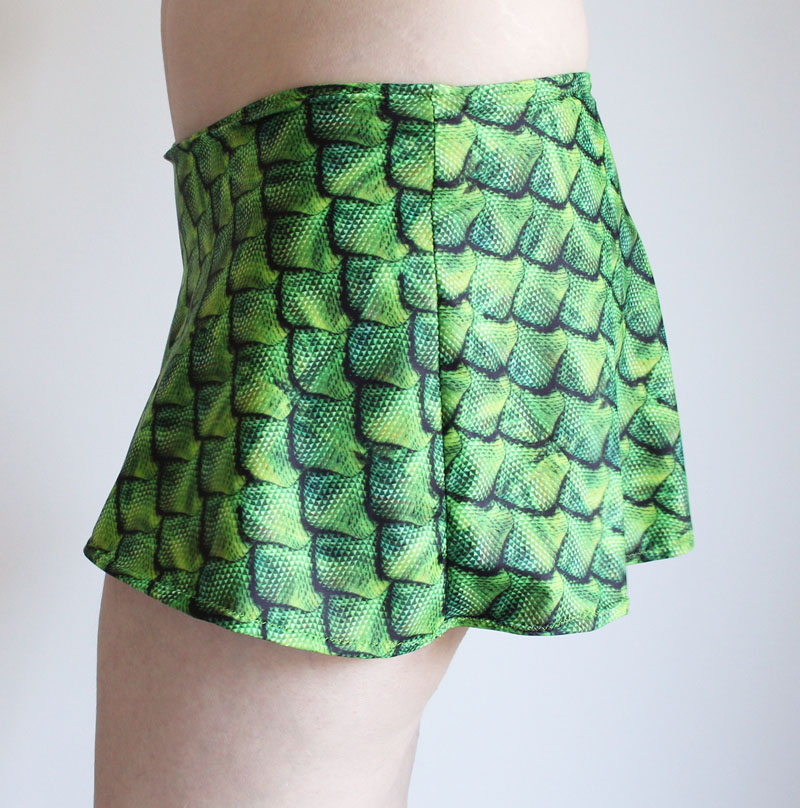
To hem the skirt use a narrow zig zag. You don’t want to put swimwear elastic into the hem because it will act like a horsehair finish and add stiffness to the bottom that you won’t want. However, if you have difficulties sewing a nice hem you can sew clear elastic or knit stay tape into the hem. Alternatively, you can leave the hem raw.

If you want to add a skirt to a one-piece suit, cut a line in your front and back pattern pieces (but don’t touch the lining pattern pieces) below the waist. Add 1/4” to the top of the bottom portion and 1/4” to the bottom of the top portion. Sew the side seams of the top front to back, bottom front to back, and skirt. Sew the suit top and bottom back together with the skirt in the seam by sewing a sandwich of the bottom right side up, skirt right side up and top right side down.
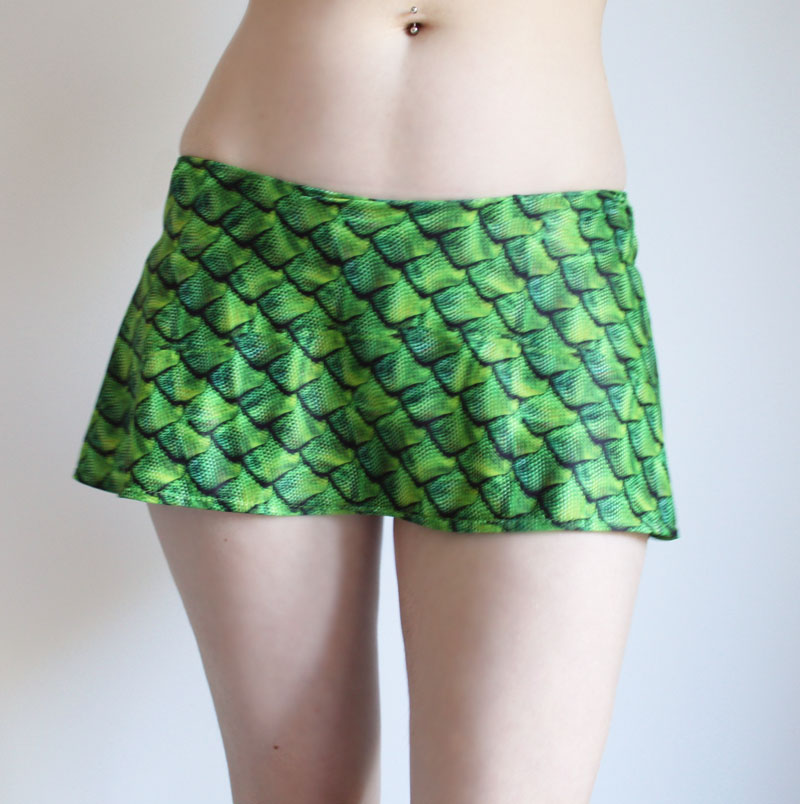
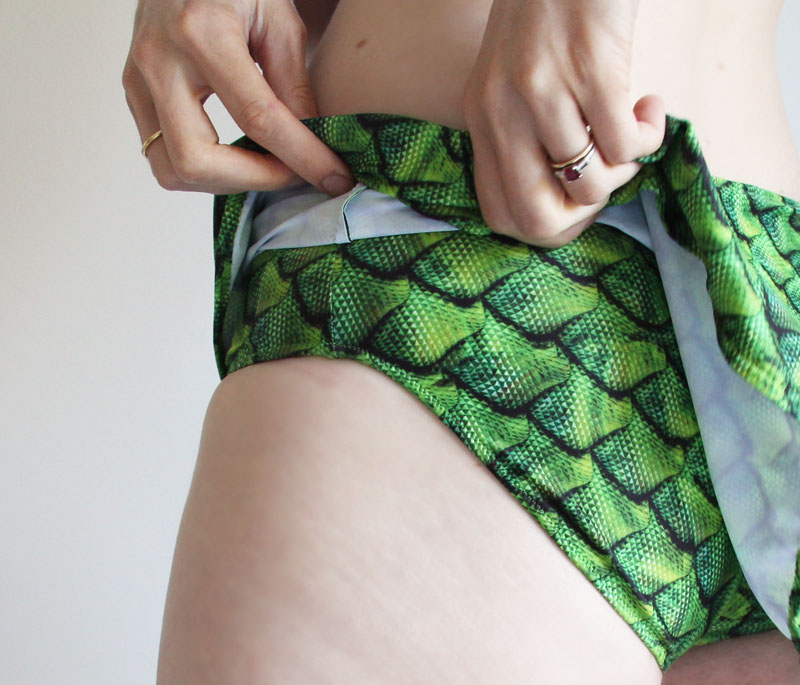






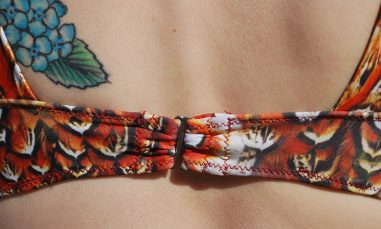
Um, what is n? I really like that fabric you chose and your skirt is wonderful.
I think you mean π? I just edited the post to clarify. It’s the symbol for pi which is used in geometry and it’s equal to roughly 3.14. Hope that helps!
This series on how to alter/expand the basic Nautilus pattern is fantastic. Not only is it great on it’s own but these posts provide a solid primer on how to develop and use a TNT sewing pattern. Get one pattern that really fits you well and where you understand the design lines and you can work it to create any number of useful garments. Thinking about and using patterns in this way can really take your sewing and wardrobing to the next level – you’ll get consistent results and end up with garments that you love to wear.
For all the talk about TNTs it much more rare to get an in-depth look at how to work with them – other than Carolyn at Diary of a Sewing Fanatic and now this series. Great resource! Hooray!
Does anyone know how to alter a skirted swimsuit bottom down a size. Or can it be done
It can be challenging to alter a ready-made swimsuit down a size because, in order to have the seams lie comfortably flat you’ll need to remove the elastic from the edges, cut off your excess fabric and re-sew your seam, and then re-sew the elastic. Because swimsuits rely on a lot of negative ease for fit, you want to take the extra time to have your elastic smooth because it can pinch or bind uncomfortably if you don’t.